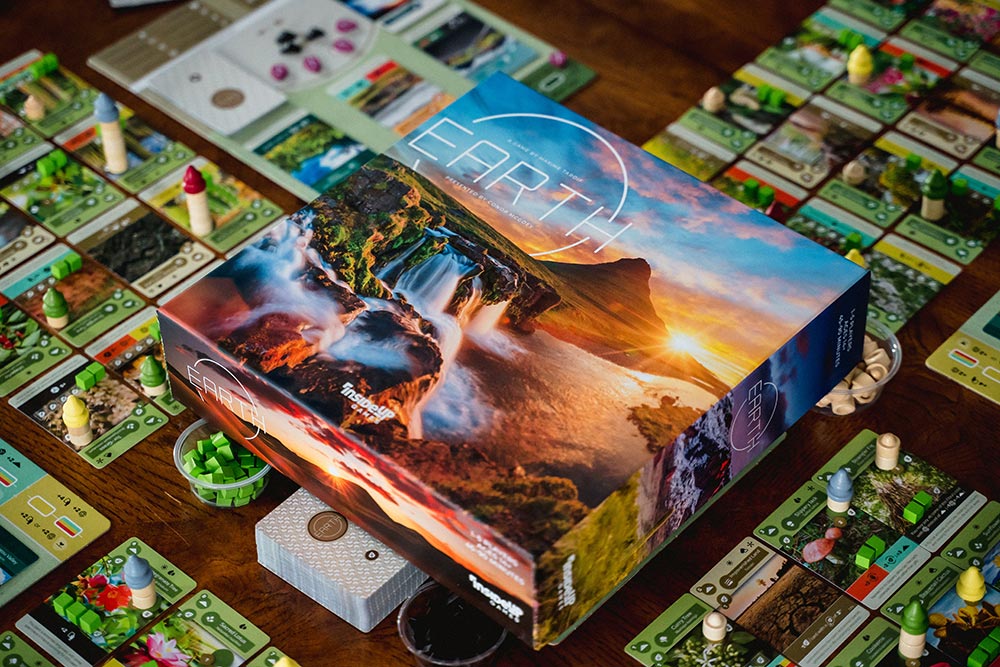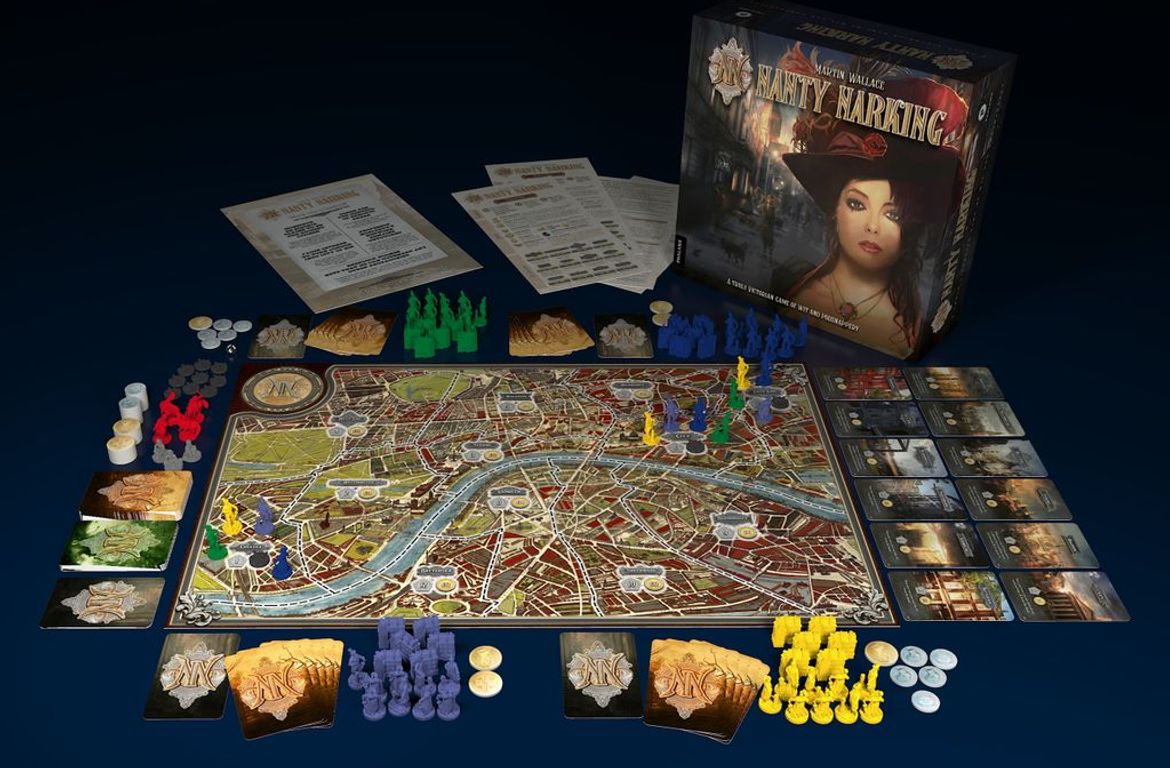
Earth: Istražite Prirodna Čuda planete Zemlje kroz Društvenu Igru
U svijetu društvenih igara, Earth se ističe kao igra koja kombinira ekološku svjesnost, strategiju i prekrasnu umjetnost. Ako ste ljubitelj
by Paolo Mori
Probably one of the most gratifying things that can happen to a game designer is receiving a proposal for a second edition of one of their games. In an industry with several thousand new games released every year, along with ever-changing tastes in the gaming community, such a proposal means that your game still has something to say to the players.
While my curse of “unpublished expansions” is a rather well-known thing, in recent years I have instead been touched by a sort of “second edition blessing”, with the releases of Via Magica (a new edition of Augustus), Libertalia: Winds of Galecrest (a new edition of Libertalia), and The Unsuspectables (a new edition of Unusual Suspects). I have also recently signed a contract for a new (and extensively revised) edition of Pocket Battles and started working on a revamped Dogs of War.
Ethnos — my most beloved creation, but don’t tell that to my other games — was not to be left out! While I cannot complain about the overall sales and appreciation the game received, I must admit that I’ve always had the feeling that it’s a game that had more to give.
For this reason, there have been talks with CMON for years about a new edition, to revive the game and to “fix” some aspects of it. We mainly talked about the theme, which has always been the most debated aspect of the game. The fantasy setting — which was the same, intentionally generic, sort of “Add your theme here” setting as the original prototype I had submitted to CMON — seemed to many to be a bit too “pasted on”, or at a minimum uninspired. This is also the reason why so many players over the years have proposed their own re-themed version of Ethnos with a variety of different settings, often with outstanding and inspiring results.
The illustrator had already proposed the first drafts when CMON informed me that they were considering a different opportunity, namely the possibility of sub-licensing the second edition of the game to Space Cowboys. While I don’t really love sub-licensing (I always feel like I’m losing some control over my games), I could certainly see the positive elements of this happening. Besides knowing the editorial care Space Cowboys has always put into its products, I had already worked with some of them in the past (when the studio with this name did not yet exist) for the first edition of Libertalia, and it seemed to me that Ethnos could really be a game “in their veins”. Therefore, after a discussion with Philippe Mouret about their ideas for the game, I decided to agree to this solution, and I actually started working on the second edition with a new publisher.
Domitien, the Space Cowboys developer who personally oversaw the project, and I discussed which aspects of the original game were perceived as problematic or at least had room for refinement. In no particular order, these included: the balance of points between the area-control element and the card set collection; the annoyance perceived by some players for the occasional forced “top decking” moments (for those who have never played the original game, it can happen that for several turns in a row you are just blindly drawing one card from the top of the deck); the less-than-satisfying experience of the two-player variant; and finally, of course, the theme. Of course, I am just talking about the aspects that at least partially involve my role as game designer. I am well aware that a good portion of the comments from players are about the artwork, the colors of the tokens, the game cover, and about Slovakia.
Specifically regarding the setting, the idea for the new edition’s theme was that of archaeological expeditions in different places of the planet. (The six regions of Ethnos Island would thus be transformed into the six continents.) This immediately seemed like a good choice to me. To add variability to the game, multiple different locations would be associated with each continent, each with a different distribution of points for the three eras (as in the original game).
Prototype
However, the idea of expeditions had already begun to tickle the idea in my head that, instead of occupying areas, having tracks on which players would advance by playing sets of cards could be more fitting for the theme. Initially, this was merely an aesthetic change; there were no longer tokens to place, but rather pawns to advance, though from a gameplay perspective nothing really changed…yet it seemed to me that we were not fully exploiting an opportunity, not least because the variability we had been looking for was in fact rather cosmetic. Playing with a location that awarded 10/6/2 points to the first three players on a track instead of one awarding 8/8/4 did not truly create a different experience (as opposed to, say, the different mixes of bands — oops, characters! — in the game).
Therefore, just a few days before my scheduled visit to Paris to work with the Space Cowboys team on the game, I decided to go for something different: I drafted a rough new prototype in which each location track worked differently from the others, with variable requirements such as the number of cards to play and a unique progression of points that were awarded at the end of each round, depending on which space a player’s pawn was in. The tracks also opened up an interesting design space as it had suddenly become possible to apply little “special abilities” to each location. For instance, on one track it was important to be the only player in a given space; on another, the points awarded on each space alternated between high and low values (so that it was important to be on the right space at the end of the round); on yet another, it was necessary to advance with two different pawns; and on yet another it was possible to take forks — though this last idea was sacrificed on the Altar of Streamlining, and who knows if I will ever pick it up again for an expansion. (Who am I kidding!)
Later prototype
Even from early tests, this change proved really successful. With just one move, it added theme and further variability, while also removing the need for a dedicated two-player variant. When setting up a game of Archeos Society, you will now have to select not only the sets of character cards that will be used in the game, but also the six expeditions that will be in play since each continent will have two possible locations from which to choose: one with simpler and more streamlined rules, and one with a bit more fluff.
Two other aspects remained to be considered: the balance between points given by the board and those given by played card sets, and the forced “top decking”. Regarding the scoring balance, after a bit of calculation and some consideration, we decided to make the scoring curve awarded by the card sets a little less steep (0-1-3-5-8-12 instead of the original triangular 0-1-3-6-10-15), while we increased the relative importance of the “race” on the tracks themselves.
Two valid sets
Regarding the top decking…I have to admit that I never perceived it as a problem in this specific game, but I can understand players who feel annoyed by this element. Over the years, I have read several ideas on how to “solve” the problem, ideas which usually consisted of replenishing the “card market” in some way or allowing players some degree of choice when drawing cards from the deck (e.g., “draw two, choose one”). My main concern with these solutions was that they were going to slow down a game that has, at times, an almost “frantic” pace.
Fortunately, the Space Cowboys team had already come up with a solution that is both brilliant and counter-intuitive: When the card display is empty, instead of drawing a single card blindly from the deck…you draw two cards! It sounds a bit silly, but this very simple change greatly reduced the top-decking moments without slowing down the game’s pace, while also adding a small, but interesting, choice: “Do I really want to draw the last card in the display, thus allowing other players a double draw from the deck?” My contribution in this case was only to “endorse” this solution and give it a name that did not make it to the rulebook (but that you still can use in your games): When the card display is emptied, and the double draw becomes an option, you should loudly yell “Happy Hour!” to improve the game experience.
The second edition was thus ready to hit the shelves — sure, ignoring some marginal aspects such as artwork, production, etc. — a second edition with which I am extremely pleased and which hopefully will bring in new players to enjoy this game that I still love so much, without disappointing the supporters of the original Ethnos game. The core essence of the game is still there: the lightning-fast flow of play, the hand-management pleasure of deciding which expedition to play and with which leader, the fun of watching your greedy opponents discard half of their hands to the display, and the increased tension when the second dragon (I mean, monkey) card has been drawn. Of course, you won’t be competing for the majority control over the regions of Slovakia* anymore, but I’m quite confident that, in time, you will learn to live with it.
*For those who wish to know the truth behind the map of Slovakia from the first edition of the game…well, the story is so trivial that I almost hate to spoil the mystery. In short, to make a prototype with a believable island-shaped outline, I used an image of Slovakia taken from the internet — only I forgot to mention this to the CMON editors when I handed them the game. Who would have guessed that John Howe would trace those same borders when creating the final game board?!

U svijetu društvenih igara, Earth se ističe kao igra koja kombinira ekološku svjesnost, strategiju i prekrasnu umjetnost. Ako ste ljubitelj

U svijetu društvenih igara, rijetko koja igra uspijeva obuhvatiti bogatstvo povijesti, strategije i priče poput Nanty Narkinga. Ova igra, smještena